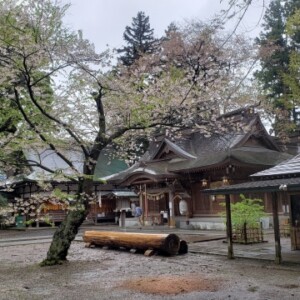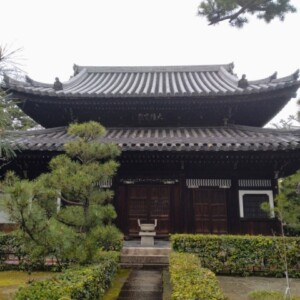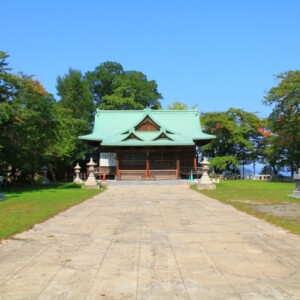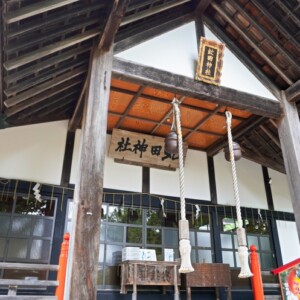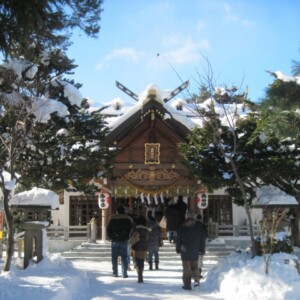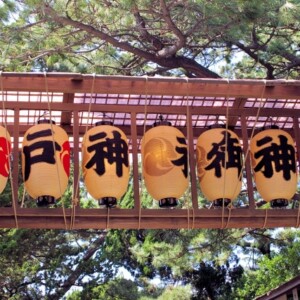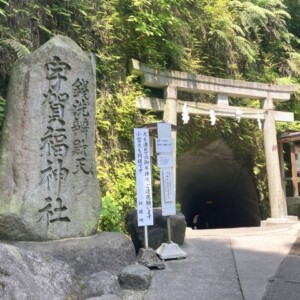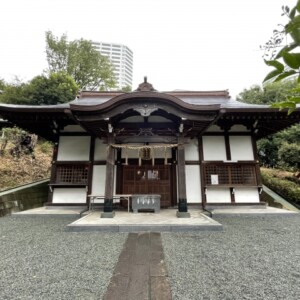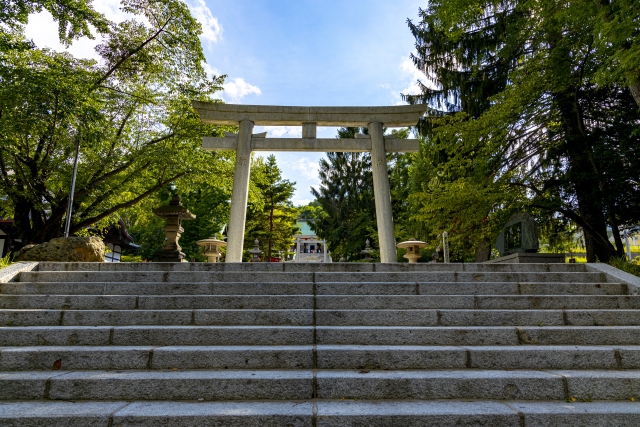
Sumiyoshi-jinja Shrine|Complete guide to the history, highlights, and worship information of this historic shrine
Sumiyoshi Shrine, located on a hill overlooking the port town of Otaru, has been loved by local residents as the general guardian of Otaru since its construction in 1865. The shrine is revered as the god of safe voyage, as Otaru flourished as a shipping town. The shrine is full of attractive sights, such as the spectacular view of Ishikari Bay from the approach and the beautiful Senbon-torii gate, where history and nature are interwoven.
Sumiyoshi Shrine Overview and Basic Information
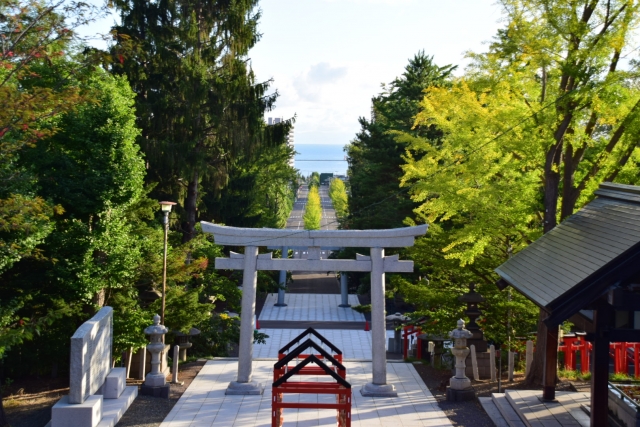
Sumiyoshi Shrine is located in Suminoe, Otaru City, Hokkaido, and is a historic shrine representing Otaru. The shrine is officially called “Otaru Sozenmusubu Sumiyoshi Shrine,” and is known as a shrine of high status, with its former status as a prefectural shrine under the umbrella of the Jinja Honcho. It is conveniently located along Route 5 and an 8-minute walk from Minami-Otaru Station.
History and Origin
The history of Sumiyoshi Shrine dates back to the period of turmoil at the end of the Edo period. In 1864, Shigeken Kikuchi, a Shinto priest of Hakodate Hachimangu Shrine, petitioned the Hakodate Magistrate’s Office to request Sumiyoshi Daijin as the general guardian of Otaru-nai (the old name of Otaru) and Takashima districts.
In June of the first year of Keio (1865), permission was granted for the shrine to be located near the Otarunai Unjo-ya, and the deity arrived on August 3, the first year of Meiji (1868). Initially, the shrine was temporarily dedicated at Itsukushima Shrine in Yamanoue-cho because the shrine site could not be built in time, and a sechinseki ceremony was held at the shrine.
In 1871, the shrine was moved from Itsukushima Shrine to 28, Kyotoku-cho, and in 1875, it was upgraded to a township shrine. After a fire in 1881, the shrine was permitted to move to its current location at the time of the Ryotoku-cho road revision, and the current shrine building was constructed in 1899. The shrine was originally called “Sumie Shrine,” but was renamed “Sumiyoshi Shrine” in January 1892, and was elevated to the status of a prefectural shrine in November 1906.
Deities and Benefits
The four deities of Sumiyoshi Shrine are the three Sumiyoshi deities, Sokoatsutsu no Mikami, Nakaatsutsu no Mikami, and Uwatsutsu no Mikami, and Okinagatarashihime no Mikoto.
According to the Kojiki and Nihonshoki, these deities were born out of the swirling water that flowed down from Izanagi’s body when he purified himself at Tachibana-no-Odo in Hyuga, Tsukushi. Since Sumiyoshi-no-okami appeared with the divine power of misogi-no-exorcism, he is believed to be the god of purification and purification, and the god of safe childbirth.
In addition, Sumiyoshi is revered as the god of safe navigation, traffic safety, and prosperous business due to the legend of Empress Jingu’s safe return based on an oracle when she went to Silla to fight in the war. Especially in the port town of Otaru, which flourished as a shipping port, the shrine has been worshipped by sailors and merchants who prayed for safe voyages on the Kitamae Ship and other vessels.
Sumiyoshi Shrine Highlights
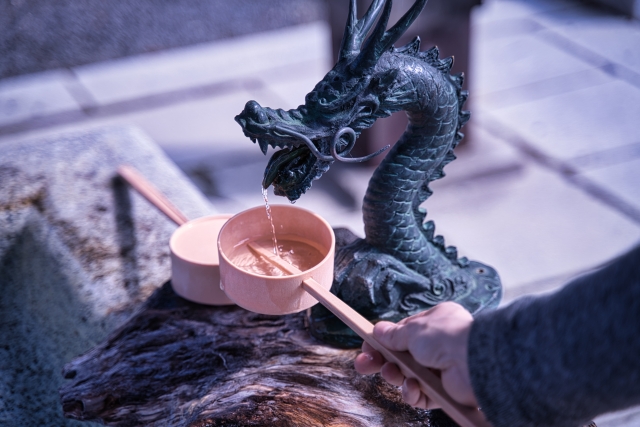
Sumiyoshi Shrine is known for its beautiful grounds that harmonize the history and nature of Otaru and has many attractions. In commemoration of the 150th anniversary of the shrine’s establishment, the stone steps and cobblestone pavement along the approach to the shrine were improved from 2008 to 2022, making the shrine even more approachable.
Architectural and Structural Attractions
The shrine pavilions of Sumiyoshi Shrine are built in the Sumiyoshi-zukuri style, an ancient and traditional architectural style, and boast an imposing area of 197 tsubo (650 square meters). The shrine grounds cover a vast area of 10,364 tsubos (9,760 m2), giving visitors a sense of the grand scale of the shrine, which is typical of Hokkaido.
Of particular note is the one-story wooden shrine office built in 1934, one of the largest wooden structures in Hokkaido, and designated as a historical building by Otaru City in 1994. It has attracted the attention of many worshippers and architecture enthusiasts as a valuable structure that conveys the beauty of traditional Japanese architecture to the modern age.
The temple grounds have a beautiful stone-paved approach leading from the first torii gate to the third torii gate, and both sides of the approach are lined with magnificent stone lanterns. Many of these stone lanterns and stone steps were dedicated by Otaru’s business leaders and wealthy merchants, and have historical value as a testament to the prosperity of the port city of Otaru.
Nature and Scenic Beauty
One of the greatest attractions of Sumiyoshi Shrine is the spectacular view from the shrine. The removal of branches from trees along the approach to the shrine has created a beautiful view of Ishikari Bay (Sea of Japan) from the approach to the shrine. Looking back from the shrine pavilion, the sea of Otaru stretches out beyond the straight approach to the shrine, offering a magnificent view befitting a shrine dedicated to the god of the sea.
Behind the shrine is a small mountain called Funakamiyama, which can be reached by climbing up 20 to 30 meters from the signboard on the left side of the shrine. From the top of the mountain, you can enjoy a panoramic view of Otaru Port and the mountains of Sakabado and Hotaru in the far distance. Especially during the period when luxury cruise ships are docked, you can enjoy the beautiful scenery typical of the port town of Otaru.
In recent years, Ezo squirrels have been seen on the temple grounds, and visitors can expect to encounter rare wildlife in the city. The temple grounds, which have different appearances throughout the four seasons, allow visitors to experience the rich nature of Hokkaido, with fresh greenery in spring, lush greenery in summer, autumn leaves in fall, and snowy landscapes in winter.
Senbon-torii and Hanatemizu
The beautiful Senbon-torii gates stand in a row next to the shrine office, welcoming visitors with their vivid vermilion color. The Senbon-torii gate has been recently renovated and has become a popular photo spot, where many visitors enjoy taking commemorative photos.
Another new attraction of Sumiyoshi Shrine is the seasonal flower water ceremony. Colorful flowers such as roses and sunflowers float beautifully in the water and are accompanied by a wooden sign that reads, “Yes, let’s go to Otaru. This hanatamizu is decorated with different flowers in each season, so visitors will find something new and exciting no matter how many times they visit.
There are two more interesting spots on the temple grounds: the “Shoho-inu” and the “Setuke-ishi” stones. The “Kotsubo-inu” is believed to be a place to pray for safe delivery and a child by first patting the head of the parent dog, then the stone of your zodiac sign, and finally the head of the puppy. The Setuke-ishi stone is a stone that can be used to measure the height of children to pray for their growth, and is popular with local families.
Visiting and Worship Information
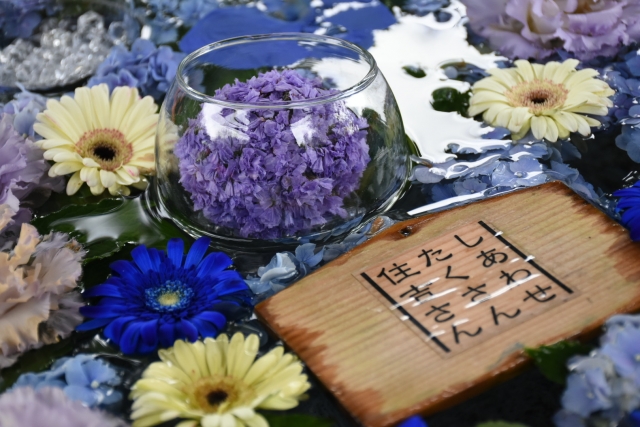
Sumiyoshi Shrine warmly welcomes visitors at any time of the day as a shrine that is open for worship 24 hours a day. As the general shrine deity of Otaru, many locals naturally turn to this shrine at milestones in their lives.
Worship Etiquette and Manners
The manner of worship at Sumiyoshi Shrine is the same as at most Shinto shrines. When passing through the first torii (first shrine gate), bow and walk down the path, avoiding the center of the path. After purifying your body and mind at the hand-watering basin, go to the hall of worship and pray with two hands and two beats.
When visiting the shrine, please express your gratitude to the deity Sumiyoshi and pray for safe voyage, traffic safety, prosperous business, safe delivery, and so on. Wild Ezo squirrels may be seen in the precincts of the temple, but it is important to refrain from feeding them and other activities that may damage their wildness, and to watch them quietly.
Annual and Seasonal Events
Various festivals are held throughout the year at Sumiyoshi Shrine. The most grandiose is the annual Otaru Festival (commonly known as the Otaru Matsuri) held from July 14 to 16, which is one of the three major festivals in Otaru. During this period, there is a procession of one of the largest portable shrines in Hokkaido called the “Hyakkan Mikoshi Gokodogyo” and the dedication of the historic “Taisai Kagura” (Shinto music and dance), which was handed down from Hachiman Shrine in Sanjo, Niigata Prefecture, in 1889.
On January 1, the New Year’s Day Festival is held to celebrate the New Year and pray for the prosperity of the imperial family, the prosperity of the nation, and the happiness of the people, and on January 15, Dondon-yaki, the burning of old money and talismans, is held in the park beside the first torii, attracting many visitors.
In the fall, the Okanda Nukuho Festival is held and the rice planted in the spring is harvested in a corner of Taguchi Farm in Oshiro, Otaru City. The harvested rice is used as rice ball guardians and as consecrated rice for the Ise Jingu Shrine.
Red Seal and Charm Information
Sumiyoshi Shrine offers beautiful red seals, which are popular with many people as a souvenir of their visit to the shrine. A variety of good luck charms are also available at the shrine office, including those for nautical safety, traffic safety, safe delivery, and prosperous business.
Ezomikuji, which are offered by shrines all over Hokkaido, are also set up in the precincts of the shrine. At Sumiyoshi Shrine, visitors can enjoy a unique omikuji written in Hokkaido dialect with an exquisite pun, “Nisshin Gepo,” which is based on Otaru’s specialty, herring.
Access/Use Information
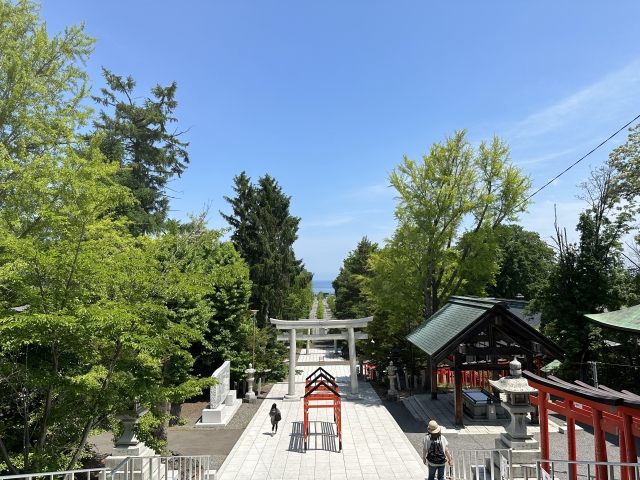
Sumiyoshi Shrine is located in a particularly accessible location within Otaru City, making it an easy shrine for tourists to visit. It is easily accessible by car as it faces National Route 5.
Traffic Access
When using JR, get off at Minami-Otaru Station on the JR Hakodate Main Line and walk straight down the street in front of the station for about 8 minutes. It is within walking distance from Otaru Station, and you can enjoy strolling along with the Otaru Canal and other tourist attractions.
By bus, you can conveniently get off at the “Sumiyoshi Jinja-mae” bus stop on the Hokkaido Chuo Bus (Otamoi Office, Mauei Office, and Fudaru Line) or J.R. Hokkaido Bus (Fudaru Line), and it is only a one-minute walk from the bus stop. Express buses from Sapporo to Otaru also run every 10 minutes and stop at the Sumiyoshi Jinja-mae bus stop, making access from the Sapporo area very convenient.
If you are coming by car, the location along Route 5 makes it easy to access from both Sapporo and Hakodate.
<Address: 2-5-1 Suminoe, Otaru-shi, Hokkaido, 047-0014 Japan
Hours of Admission, Fees, and Parking Information
Sumiyoshi Shrine is open 24 hours a day, and there is no admission fee. One of the charms of the shrine is that visitors can feel free to visit at any time of the day. Visitors can enjoy different attractions at different times of the day, such as early morning worship in the fresh air, or evening worship while watching the beautiful sunset.
For details about parking, please check the official website or contact the shrine directly. The phone number is 0134-23-0785. Since the shrine grounds are vast, a certain amount of parking space is available; however, crowding is expected during major events such as the annual festival.
Located along Route 5, there is also a soba noodle shop next to the shrine that can be used as a rest spot after visiting the shrine, offering a set meal of oyakodon or kakiage-don with soba or udon noodles for 680 yen from 11:00 to 14:00, making it a convenient place to eat between visits to the shrine.
Refer to the following websites
Otaru Sumiyoshi Shrine Official Website: http://www.otarusumiyoshijinja.or.jp/



